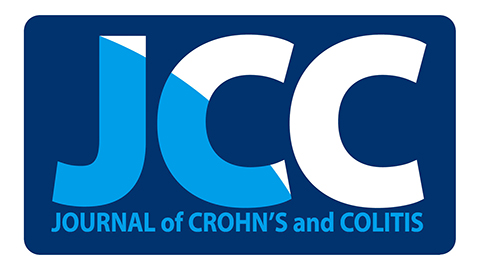
“New concepts are reviewed in Cannabis systematics, including phylogenetics and nomenclature. The family Cannabaceae now includes Cannabis, Humulus, and eight genera formerly in the Celtidaceae. Grouping Cannabis, Humulus, and Celtis actually goes back 250 years. Print fossil of the extinct genus Dorofeevia (=Humularia) reveals that Cannabis lost a sibling perhaps 20 million years ago (mya). Cannabis print fossils are rare (n=3 worldwide), making it difficult to determine when and where she evolved. A molecular clock analysis with chloroplast DNA (cpDNA) suggests Cannabis and Humulus diverged 27.8 mya. Microfossil (fossil pollen) data point to a center of origin in the northeastern Tibetan Plateau. Fossil pollen indicates that Cannabis dispersed to Europe by 1.8-1.2 mya. Mapping pollen distribution over time suggests that European Cannabis went through repeated genetic bottlenecks, when the population shrank during range contractions. Genetic drift in this population likely initiated allopatric differences between European Cannabis sativa (cannabidiol [CBD]>Δ9-tetrahydrocannabinol [THC]) and Asian Cannabis indica (THC>CBD). DNA barcode analysis supports the separation of these taxa at a subspecies level, and recognizing the formal nomenclature of C. sativa subsp. sativa and C. sativa subsp. indica. Herbarium specimens reveal that field botanists during the 18th-20th centuries applied these names to their collections rather capriciously. This may have skewed taxonomic determinations by Vavilov and Schultes, ultimately giving rise to today’s vernacular taxonomy of “Sativa” and “Indica,” which totally misaligns with formal C. sativa and C. indica. Ubiquitous interbreeding and hybridization of “Sativa” and “Indica” has rendered their distinctions almost meaningless.”



 “Cannabinoid-based interventions are being explored for central nervous system (CNS) pathologies such as neurodegeneration, demyelination, epilepsy, stroke, and trauma. As these disease states involve dysregulation of myelin integrity and/or remyelination, it is important to consider effects of the endocannabinoid system on oligodendrocytes and their precursors. In this review, we examine research reports on the effects of the endocannabinoid system (ECS) components on oligodendrocytes and their precursors, with a focus on therapeutic implications. Cannabinoid ligands and modulators of the endocannabinoid system promote cell signaling in oligodendrocyte precursor survival, proliferation, migration and differentiation, and mature oligodendrocyte survival and myelination. Agonist stimulation of oligodendrocyte precursor cells (OPCs) at both CB1 and CB2 receptors counter apoptotic processes via Akt/PI3K, and promote proliferation via Akt/mTOR and ERK pathways. CB1 receptors in radial glia promote proliferation and conversion to progenitors fated to become oligodendroglia, whereas CB2 receptors promote OPC migration in neonatal development. OPCs produce 2-arachidonoylglycerol (2-AG), stimulating cannabinoid receptor-mediated ERK pathways responsible for differentiation to arborized, myelin basic protein (MBP)-producing oligodendrocytes. In cell culture models of excitotoxicity, increased reactive oxygen species, and depolarization-dependent calcium influx, CB1 agonists improved viability of oligodendrocytes. In transient and permanent middle cerebral artery occlusion models of anoxic stroke, WIN55212-2 increased OPC proliferation and maturation to oligodendroglia, thereby reducing cerebral tissue damage. In several models of rodent encephalomyelitis, chronic treatment with cannabinoid agonists ameliorated the damage by promoting OPC survival and oligodendrocyte function. Pharmacotherapeutic strategies based upon ECS and oligodendrocyte production and survival should be considered.”
“Cannabinoid-based interventions are being explored for central nervous system (CNS) pathologies such as neurodegeneration, demyelination, epilepsy, stroke, and trauma. As these disease states involve dysregulation of myelin integrity and/or remyelination, it is important to consider effects of the endocannabinoid system on oligodendrocytes and their precursors. In this review, we examine research reports on the effects of the endocannabinoid system (ECS) components on oligodendrocytes and their precursors, with a focus on therapeutic implications. Cannabinoid ligands and modulators of the endocannabinoid system promote cell signaling in oligodendrocyte precursor survival, proliferation, migration and differentiation, and mature oligodendrocyte survival and myelination. Agonist stimulation of oligodendrocyte precursor cells (OPCs) at both CB1 and CB2 receptors counter apoptotic processes via Akt/PI3K, and promote proliferation via Akt/mTOR and ERK pathways. CB1 receptors in radial glia promote proliferation and conversion to progenitors fated to become oligodendroglia, whereas CB2 receptors promote OPC migration in neonatal development. OPCs produce 2-arachidonoylglycerol (2-AG), stimulating cannabinoid receptor-mediated ERK pathways responsible for differentiation to arborized, myelin basic protein (MBP)-producing oligodendrocytes. In cell culture models of excitotoxicity, increased reactive oxygen species, and depolarization-dependent calcium influx, CB1 agonists improved viability of oligodendrocytes. In transient and permanent middle cerebral artery occlusion models of anoxic stroke, WIN55212-2 increased OPC proliferation and maturation to oligodendroglia, thereby reducing cerebral tissue damage. In several models of rodent encephalomyelitis, chronic treatment with cannabinoid agonists ameliorated the damage by promoting OPC survival and oligodendrocyte function. Pharmacotherapeutic strategies based upon ECS and oligodendrocyte production and survival should be considered.”

 “The history of Cannabis goes along that of humankind, as speculated based on geographical and evolutionary models together with historic data collected to date. Its medical use is several thousand years old, as attested both by archeobotanical evidence of Cannabis remains and written records found in ancient texts from the sacred Vedic foundational texts of Ayurvedic medicine (about 800 before current era [BCE]) to the first known Pharmacopoea, the Chinese “Shen Nung Pen Ts’ao Ching” (1 century BCE). In this paper, we retrace the history of Cannabis traveling through the key stages of its diffusion among the most important ancient cultures up to our days, when we are facing a renaissance of its medical employment. We report through the centuries evidence of its use in numerous pathologic conditions especially for its anti-inflammatory, antiseptic, and anticonvulsing properties that support the requirement to direct our present research efforts into the definitive understanding of its efficacy.”
“The history of Cannabis goes along that of humankind, as speculated based on geographical and evolutionary models together with historic data collected to date. Its medical use is several thousand years old, as attested both by archeobotanical evidence of Cannabis remains and written records found in ancient texts from the sacred Vedic foundational texts of Ayurvedic medicine (about 800 before current era [BCE]) to the first known Pharmacopoea, the Chinese “Shen Nung Pen Ts’ao Ching” (1 century BCE). In this paper, we retrace the history of Cannabis traveling through the key stages of its diffusion among the most important ancient cultures up to our days, when we are facing a renaissance of its medical employment. We report through the centuries evidence of its use in numerous pathologic conditions especially for its anti-inflammatory, antiseptic, and anticonvulsing properties that support the requirement to direct our present research efforts into the definitive understanding of its efficacy.”
